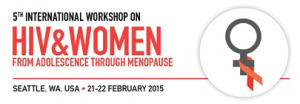Pregnancy rates among women using ART and hormonal contraceptives in Kenya
1 June 2015. Related: Conference reports, Antiretrovirals, Pregnancy, Intl Workshop on HIV and Women 5th 2015.
Incident pregnancy rates in HIV positive women using the subdermal hormonal implant with efavirenz (EFV)-based ART were 2.6 times higher than in women using nevirapine (NVP)-based ART – according to a study conducted in western Kenya, presented at the 5th International Workshop on HIV & Women. [1]
Concerns have been raised by recent analyses showing EFV reduces the efficacy of subdermal contraceptive implants.
The aim of the Kenyan study was to determine whether pregnancy rates differed in women using implants or injectable depomedroxyprogesterone acetate (DMPA) and EFV- or NVP-based ART. It was a retrospective analysis of a longitudinal cohort of women aged 18 to 45 years enrolled in HIV treatment facilities and followed from January 2011 to December 2013.A total of 24,562 women contributed 94,716 observations to the analysis, with 3,331 incident pregnancies.
Adjusted incident pregnancy rates among women using implants were 5.4 (95% CI: 1.9 to 8.8) and 2.1 (95% CI: 1.1 to 3.1) per 100 women years, for women receiving EFV- and NVP-based ART respectively. For DMPA users these rates were 13 (95% CI: 9.5 to 17) and 9.3 (95% CI: 8.0 to 11.0), respectively.
In the multivariate Cox proportional hazards models, the hazard of incident pregnancy among women using implants and receiving EFV- vs NVP-based ART was 2.6 (95% CI: 1.5 to 4.5), p=0.001. For DMPA the hazard of was 1.1 (95% CI: 0.87 to 1.4), p=0.41. But DMPA users had 3 times higher incidence pregnancy than implant users.
The investigators noted that this was the largest cohort to date to suggest that the concomitant used of hormonal contraception with EFV-based ART might reduce the effectiveness of contraception.
Comment
These findings reinforce those reported previously, including at CROI earlier this year. [2]
Increased eligibility for treatment – particularly following the START results – will significantly increase the number of women of child bearing age indicated for ART. For this and other reasons, EFV-based regimens might not be the ideal first line treatment.
References:
- Patel R et al. Pregnancy rates among HIV-positive women using various forms of antiretroviral therapy and contraceptives in Kenya. 5th International Workshop on HIV & Women, 21–22 February 2015, Seattle. Oral abstract O4.
- Scarsi K et al. Levonorgestrel implant + EFV-based ART: unintended pregnancies and associated PK data. CROI 2015. Seattle, Washington. 23-26 February 2015. Oral abstract 85LB.
http://www.croiconference.org/sessions/levonorgestrel-implant-efv-based-art-unintended-pregnancies-and-associated-pk-data


